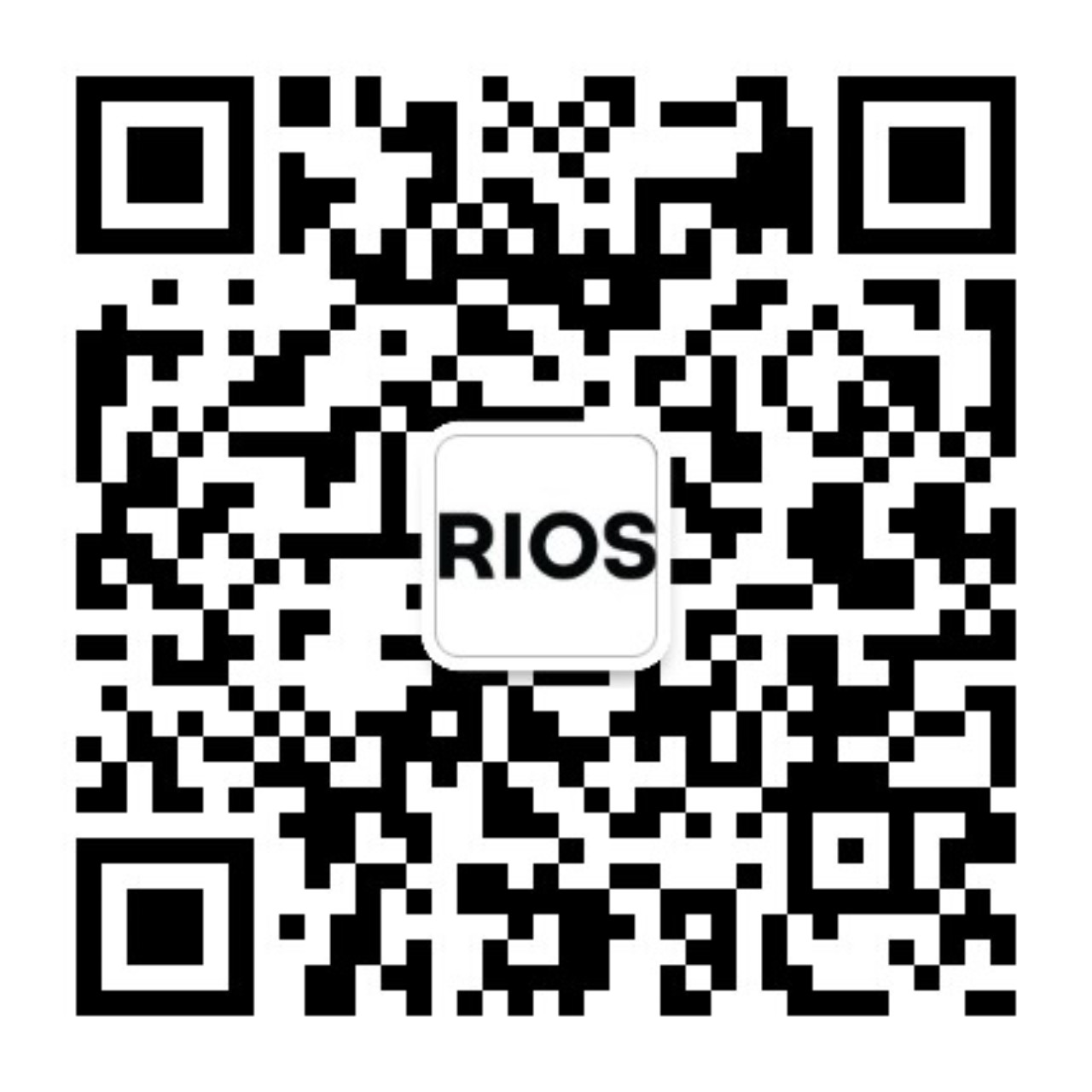Recognizing the Interconnectedness of Flora and Cultural Touchpoints
At RIOS, we embrace a global perspective, which has led to the establishment of our new offices across the United States and abroad. This expansion allows us to expand our design horizons and gain valuable insights into pressing global issues such as climate change and biodiversity loss. As we continue to grow and establish roots in various cities, we personalize deeper connections that transcend geographical boundaries amid these challenges.
One area where this interconnectedness becomes prevalent is how we engage with urban biodiversity. While our work takes us to different cities and countries, we recognize the profound interconnectedness of flora, existing in distribution patterns and migratory journeys beyond our cultural touchpoints. Across eight major migratory flyways, countless plant species span vast geographies. Take Achillea millefolium, for example – it may vary in size and seasonal persistence from Montana to Oregon, Texas to Southern California, but its essence remains the same. The ingenuity and adaptability of flora can unite our cities, just as creative design compositions can set them apart.
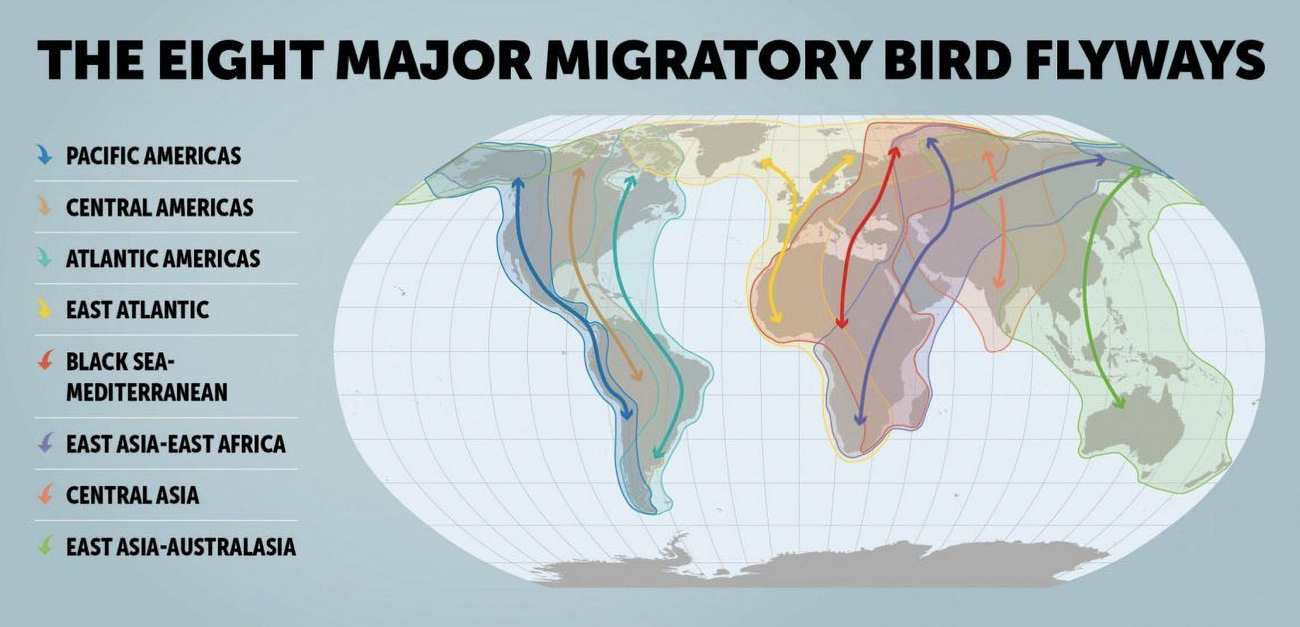
As humanity has settled in every corner of the globe, migration is no longer solely a natural process. Our agricultural systems now heavily rely on the human-assisted migration of domesticated pollinators. Honeybee colonies are critical for crops and regional economies. While these pollinators may not follow traditional migration routes, they still require a thriving environment to ensure our food system’s robustness in the face of a changing world.
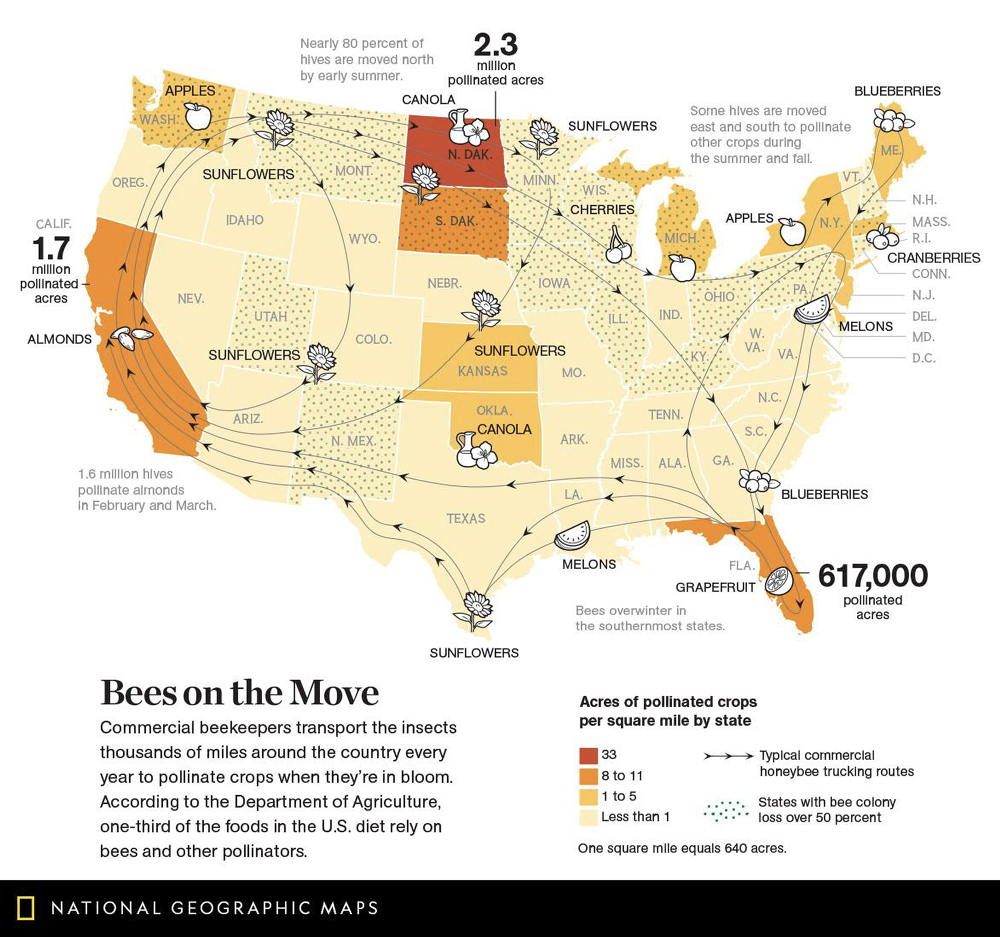
Creating Local Connections
While our offices in Los Angeles, Portland, Boulder, and Austin are local to their respective cities, they are linked by invisible ecological threads that impact the life cycles of migratory birds and butterflies, such as the monarch, which transcend geographical boundaries. Unfortunately, the fragmented development and cultural definitions we impose jeopardize their life cycles and undermine the very environmental connections that bind us together.
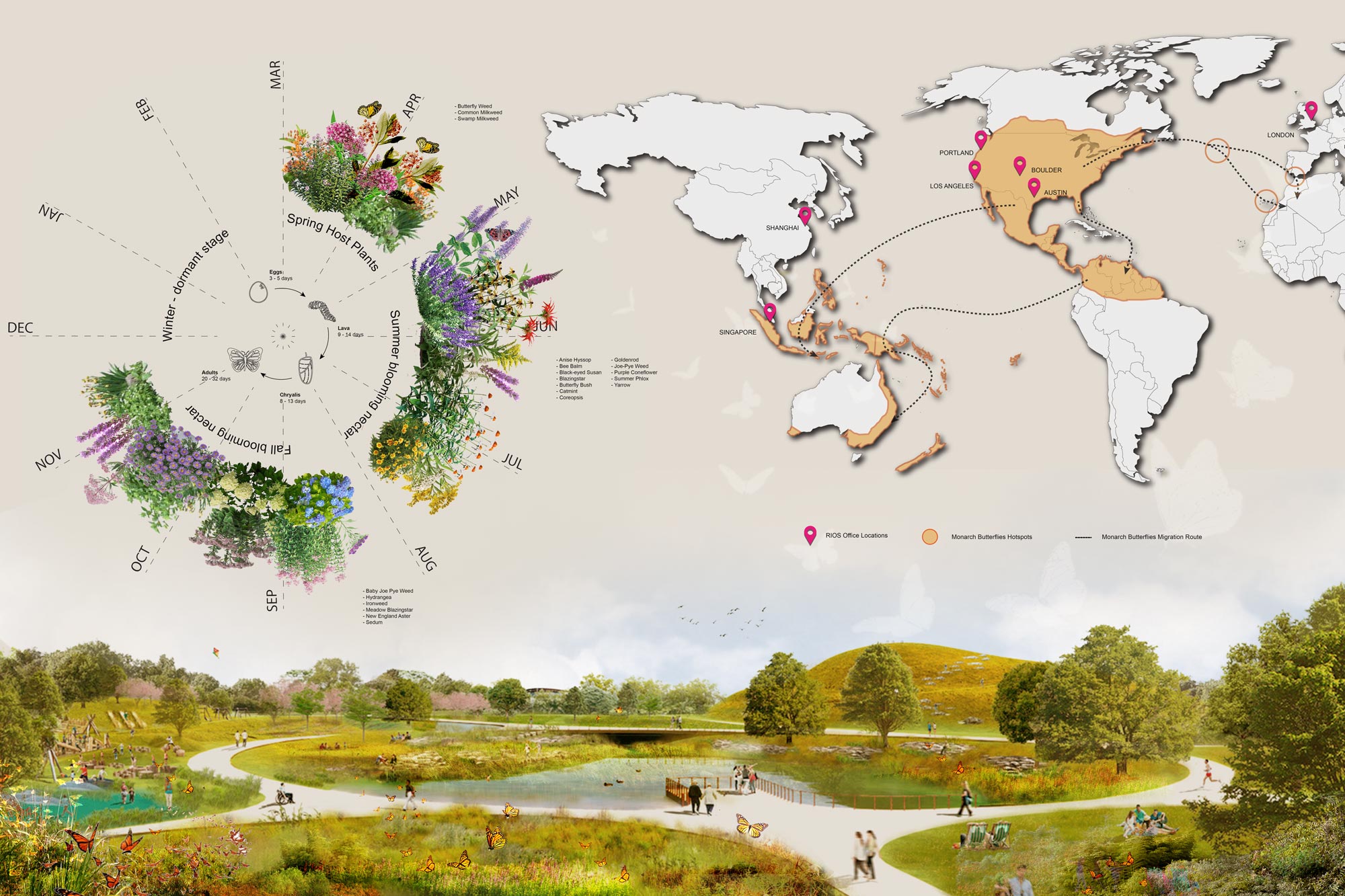
Strategic plantings that consider seasonality and migratory pathways can support pollinator populations on a global scale.
By focusing on hyperlocal initiatives, we can strengthen the connections between these places, coordinate solutions that support global biodiversity, and tackle issues on both regional and global scales.
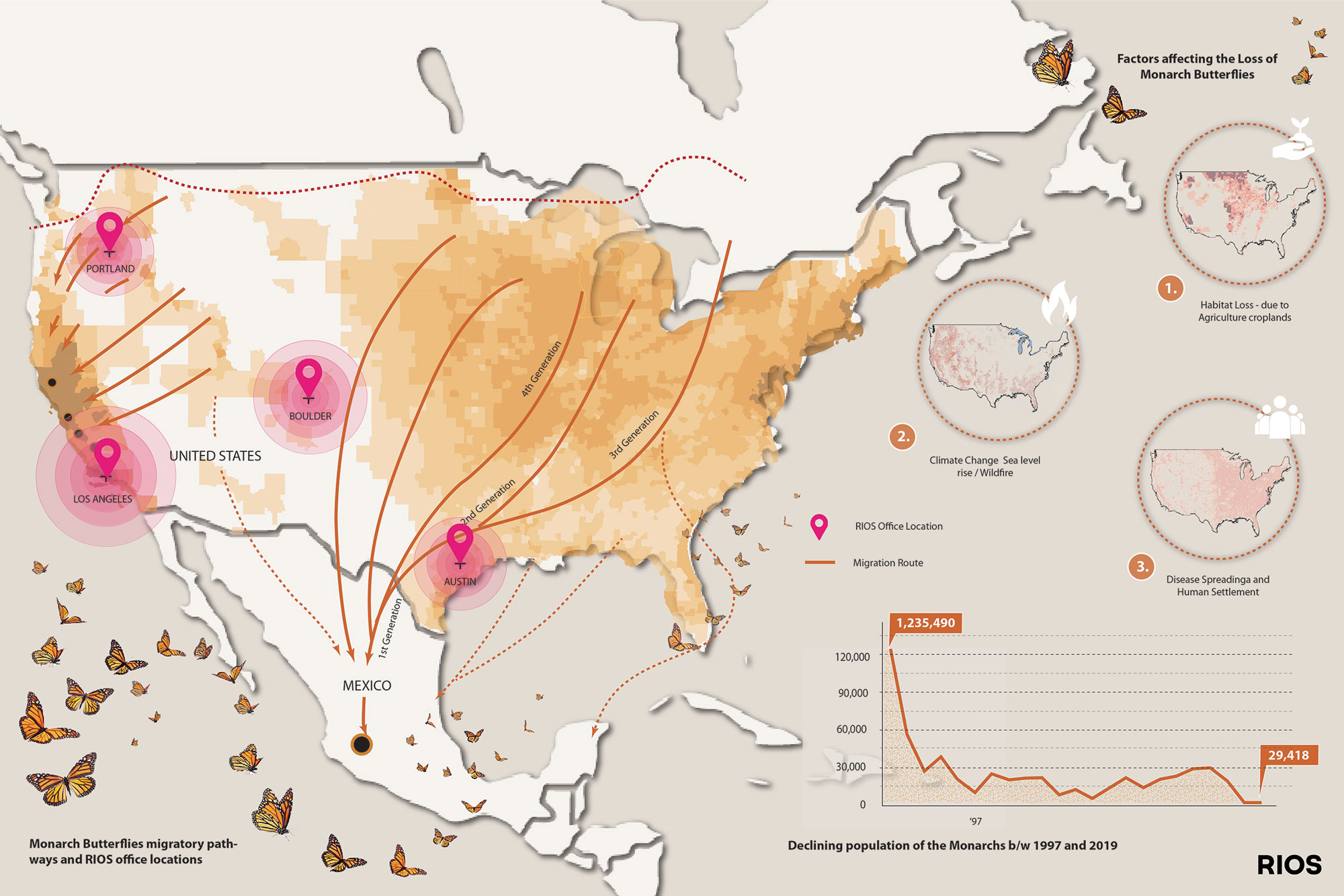
RIOS' US offices are positioned to support monarch butterflies along their migration paths.
At the regional level, this entails designing interventions that support species across different locations and along their entire migratory journeys. Whether it’s a brewery in Montana, a public park in Oregon, an estate in Nevada, or a public garden in California, each of these spaces has the potential to provide essential resources like food, water, and shelter for migratory birds. Likewise, a life science campus in Boulder can contribute to a broader network of local open spaces that support pollinators.
These changes in migration patterns and life cycles extend far beyond local borders—they are a global phenomenon. For instance, Asia supports tremendous flyways and migration routes from Australia to Siberia. This positioning makes our newly opened offices in Shanghai and Singapore key outposts for developing projects that promote urban vitality and implement invisible infrastructure on a large scale.
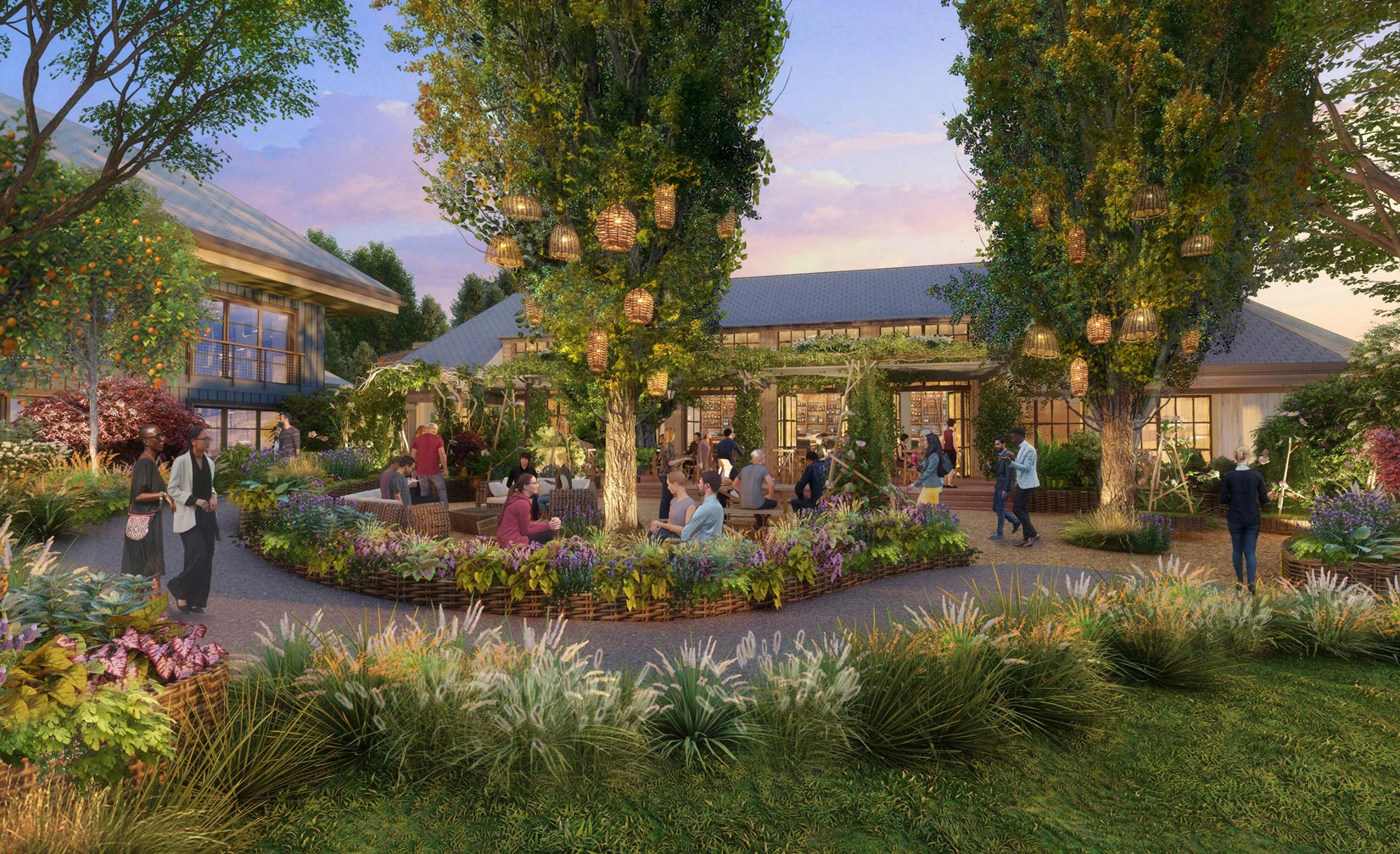
A planting palette including milkweed attracts monarch butterflies to this nature-forward hotel.
A Pollinator-Friendly Portfolio
RIOS remains committed to promoting pollinator-friendly practices across various disciplines. In our endeavors throughout California, we have embraced the inclusion of milkweed in our designs to provide support for the Western Monarch butterfly throughout its lifecycle and along its extensive migration journey.
Treehouse Hotel Sunnyvale is an excellent example of our nature-forward hospitality design. Here, we have thoughtfully incorporated milkweed into the plant palette, creating an immersive refueling point and waystation for monarch butterflies and travelers. This innovative approach not only enhances the guest experience but also contributes to the conservation of these magnificent creatures. Located 350 miles south of West Hollywood, the Standing Meadow billboard reimagines the role of digital media billboards, advocating for renewed urban spaces that prioritize public gatherings and habitat. By interweaving milkweed as an accent and food source, we bolster habitat at the base of the Santa Monica Mountains, nurturing a thriving ecosystem.
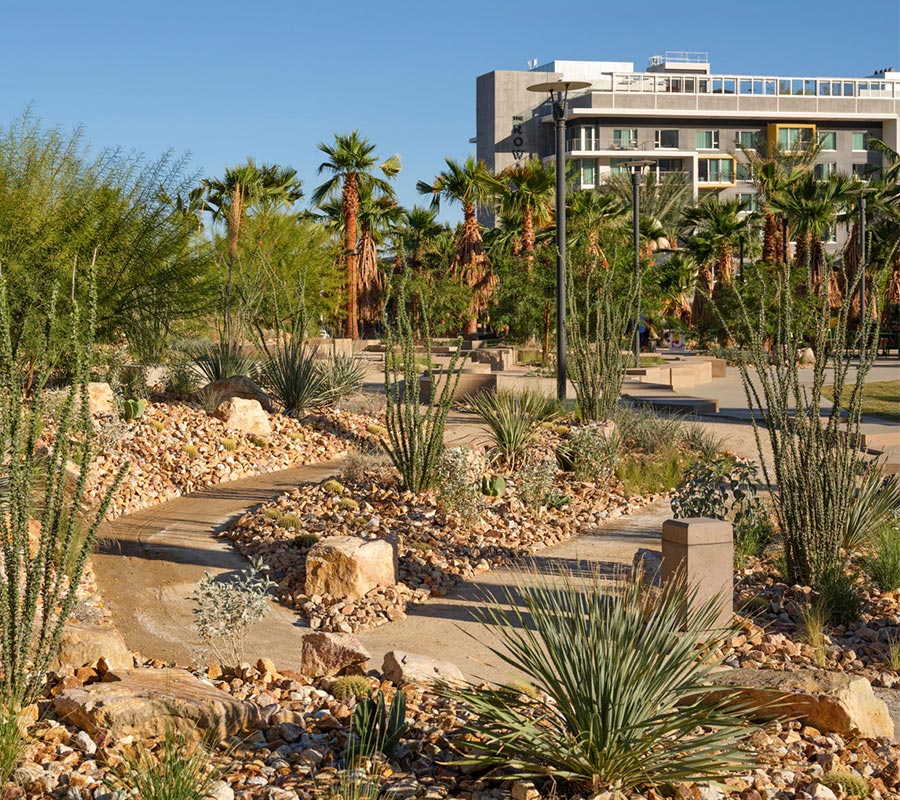
Palm Springs Downtown Park showcases the biodiversity of the desert.
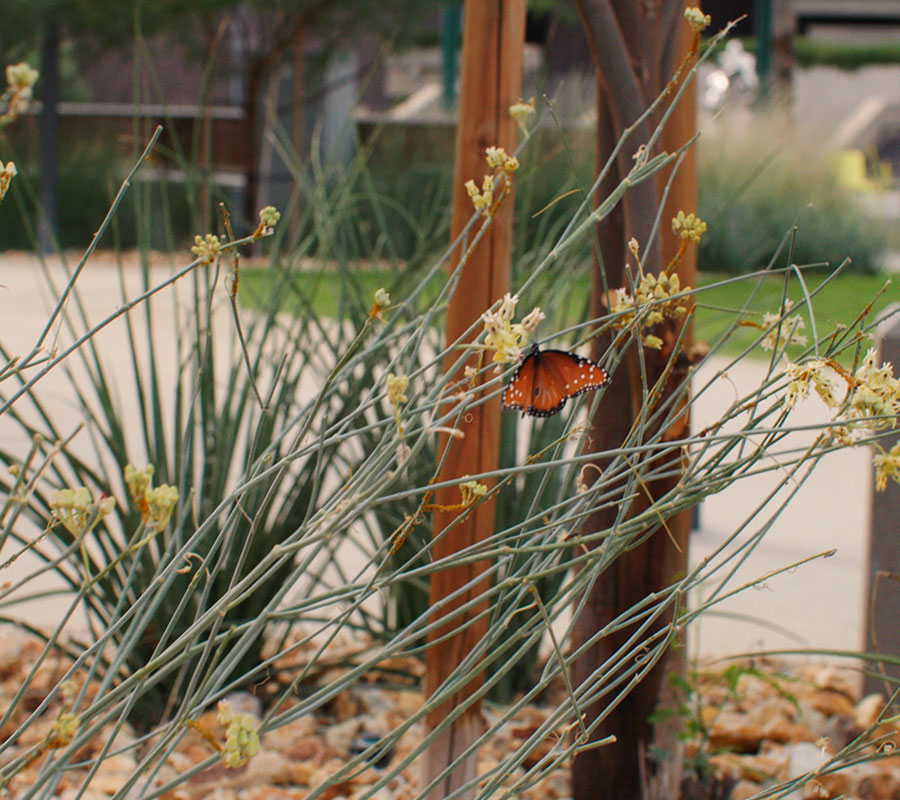
Desert milkweed provides habitat for monarch butterflies.
Continuing the monarch butterfly’s migration route, approximately 115 miles further, Palm Springs Downtown Park showcases a highly native plant palette that harmonizes with the surrounding ecology. Throughout the park, we have incorporated Desert Milkweed (Aesclepias subulata), a vital plant species that entices monarch butterflies to the site, creating a haven for these enchanting creatures.
Our commitment to urban public spaces extends beyond California, offering us unique opportunities to support the Eastern Monarch population as well. Projects like Skyline Park in Denver, Element Research Campus in Boulder, and Lynn Wyatt Square for the Performing Arts in Houston serve as steppingstones for us to contribute to and protect migratory patterns.
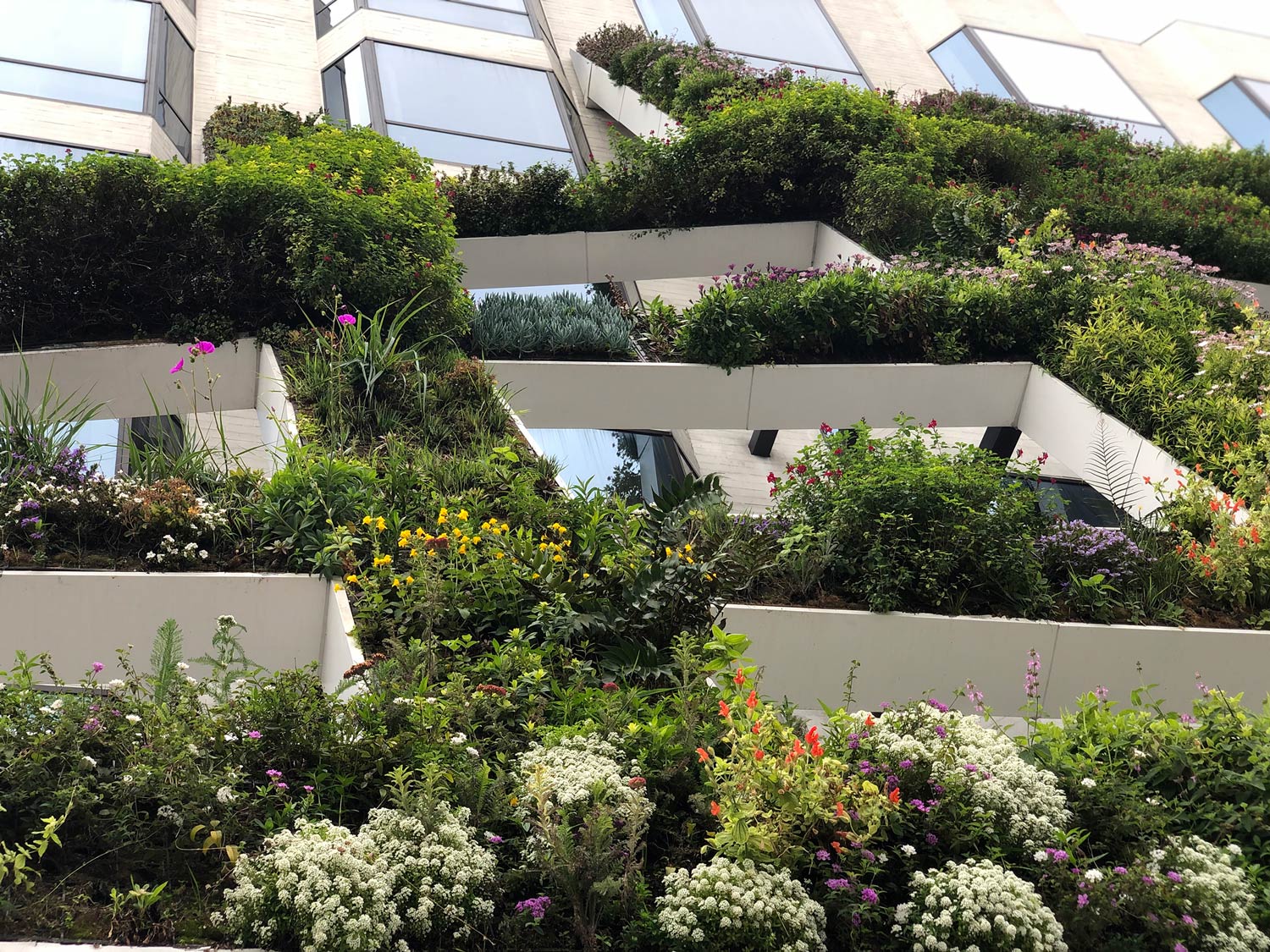
RIOS continually prioritizes pollinator-friendly designs, like this living canopy at IAC's Los Angeles office.
Fostering Global Connections
These links between projects extend into our international work. As climate change affects rainfall patterns worldwide, we are discovering similarities between our experiences in California and Europe’s new challenges. West Hendon Playing Fields introduces an innovative model for the traditional British park system, incorporating water collection and reuse with a transition to biodiverse plantings. This adaptive approach supports pollinators in North London while addressing climate change’s evolving environmental needs.
Collaborative efforts between our London and Los Angeles offices like West Hendon Playing Fields explore how to transform urban green spaces into sustainable and biodiverse landscapes.
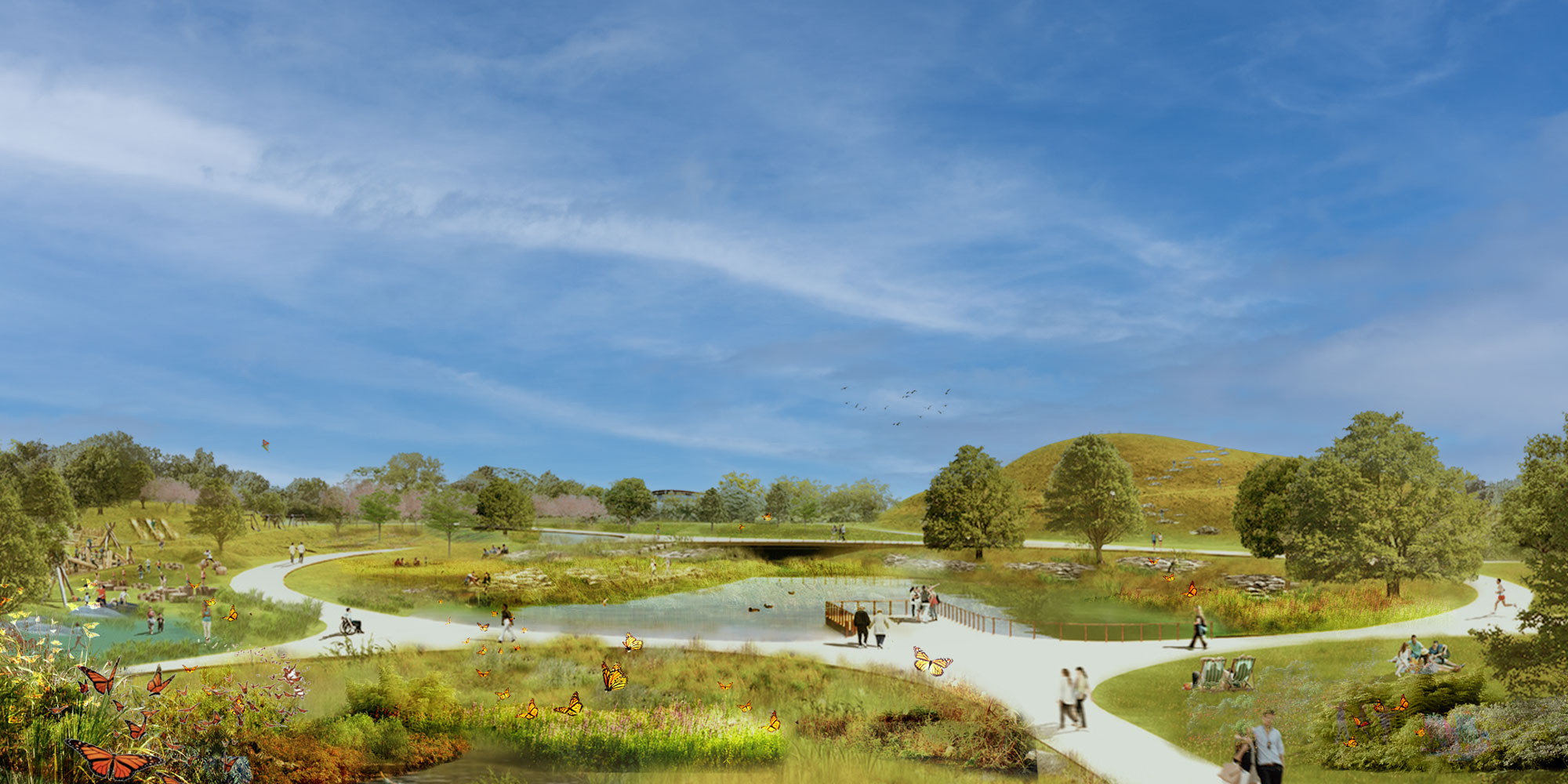
West Hendon playing fields incorporates water collection and reuse in addition to biodiverse plantings.
The Garden of Reciprocity at Chaumont showcases pollinator-rich plants. While it was a temporary exhibit, the garden engaged visitors and their relationship with nature, aiming to recognize our interdependence with nature and leave with a sense of responsibility and purpose around supporting ecological services.
In Asia, our offices in Singapore and Shanghai provide new frontiers for thinking globally about pollinators and wildlife migration. Chengdu Tianfu Park reimagines an existing park by introducing five interactive park rooms that activate and reprogram the park. The activations include immersive gardens with native and pollinator-friendly plants to create an ecological node in the heart of the city.
In Singapore, where the landscape seamlessly blends with the urban environment, recent projects have provided us with opportunities to redefine the possibilities of local landscapes and their performance. Our rock gardens, designed for a confidential site, bring a distinct ecotone to the island, offering compelling experiences for urban living while also introducing ecological niches within the built environment.
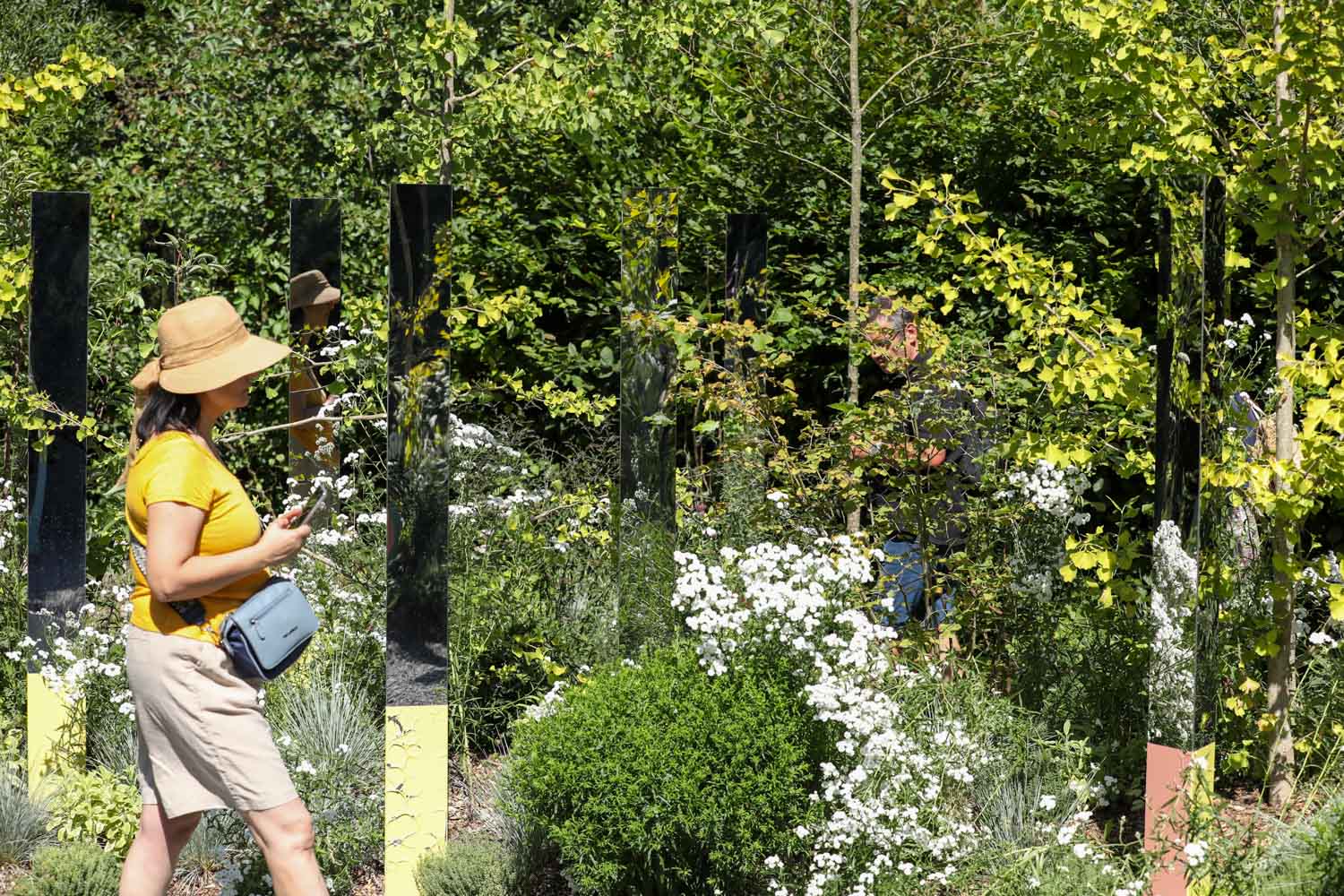
The Garden of Reciprocity showcased a mix of medicinal, edible, and spiritually significant plants.
Through our work, RIOS remains committed to viewing landscapes not merely as gardens, but as critical support systems in an ever-changing world. By adopting a broader perspective that prioritizes the preservation of dwindling pollinator populations, we are creating a legacy of work with our clients and collaborations that address global conditions at the local scale – whether we are working in our hometown of Los Angeles or in cities around the world.
Written by Brent Jacobsen
Read more on Urban Vibrancy.

